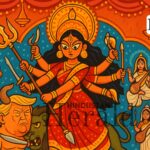New Delhi, September 26: Six years ago, Ladakh was raising tricolours and singing in the streets. When Delhi announced the end of Article 370 and carved Ladakh into a Union Territory, it felt like a long fight had finally been won. Sonam Wangchuk, the engineer-turned-activist admired worldwide for his work on solar schools and climate action, was one of the loudest voices of support. He even thanked the Prime Minister personally, saying Ladakh’s decades-old demand had been fulfilled.
Now, he sits in police custody under the National Security Act. His NGO has been stripped of its license to receive foreign donations. The government calls him an instigator of unrest. His supporters say he has been punished for demanding nothing more than what was promised.
From Hope To Disillusionment
Wangchuk’s journey is the arc of Ladakh itself. In 2019, UT status looked like empowerment. People imagined an assembly, local control over jobs, and safeguards for fragile land. Instead, power flowed not to the people but to a Lieutenant Governor, a bureaucrat from Delhi. No legislature. No chief minister. No real voice.
Over the years, the frustration grew. In 2021, groups from Leh and Kargil, often rivals, joined hands under the Leh Apex Body and Kargil Democratic Alliance. It was a rare moment of unity. Their agenda was simple: four demands that haven’t changed since statehood: Sixth Schedule protection, proper parliamentary representation, and job guarantees for locals.
A String Of Broken Promises
The bitterness stems not only from what wasn’t done, but also from what was promised and never delivered. The BJP had explicitly listed Sixth Schedule protections for Ladakh in its 2019 manifesto. The same pledge was made during the 2020 council elections. Yet after nine rounds of talks with Delhi, nothing concrete emerged.
By 2024, Wangchuk had begun to embody the impatience. He fasted for 21 days in Leh, drawing national attention, then led a march of over a thousand kilometres toward Delhi, only to be stopped at the city’s edge. His methods remained peaceful, but the message was sharp: Ladakh would not be ignored.
A Bloody September
This September, patience ran out. For two weeks, hunger strikers camped in Leh’s Martyrs’ Memorial Park. On the 15th day, two elderly men fainted and had to be rushed to the hospital. Tension snapped. Younger protesters left the camp and began marching towards government offices and the BJP headquarters.
Police fired to control the crowds. By nightfall, four people were dead, and more than ninety were injured. It was the worst violence Ladakh had seen in living memory. For many, it marked the moment when hope turned to anger.
The Crackdown On Wangchuk
The government’s response was swift. Wangchuk was arrested under the NSA. His NGO SECMOL, long admired for its eco-schools and innovation projects, lost its FCRA license overnight. Section 163 restrictions banned gatherings of five or more people.
Officials accused him of fanning unrest, citing his references to movements like the Arab Spring. Wangchuk insists he never called for violence. “I have spoken in Hindi and Ladakhi, both always urging peace,” he said in a video message shortly before his arrest. His followers argue that the state has confused dissent with sedition.
Why Ladakh Matters Beyond Ladakh
This isn’t just a local issue. Ladakh makes up 60 percent of the old Jammu and Kashmir’s landmass and shares borders with both China and Pakistan. Since the Galwan clashes of 2020, Delhi has tightened its military focus here. That strategic importance partly explains the Centre’s reluctance to loosen control.
At the same time, Delhi has poured money into the UT the budget jumped from ₹1,136 crore in 2019-20 to nearly ₹6,000 crore in 2022-23. But Ladakhis argue that money without representation is meaningless. They point to a vacuum in governance: the J&K Reorganisation Act had promised advisory councils, but they were never set up.
The Constitutional Angle
For Ladakhis, the Sixth Schedule is not just about culture. It is about survival. If extended to Ladakh, it would give local councils control over land, forests, and resources. In a region where corporations eye mining rights and solar projects, that protection feels existential.
Right now, Ladakh is run under Article 240, which puts ultimate authority in Delhi’s hands. Many in Leh and Kargil see it as a betrayal of the spirit of UT status.
Where Things Stand
A high-powered committee is supposed to meet again on October 6. But with Wangchuk in jail and public anger rising, it is unclear whether talks can continue in good faith. His arrest may have been meant to stifle the movement. Instead, it has turned him into its symbol.
Six years ago, Ladakhis cheered Delhi’s decision and believed their long struggle had ended. Today, they are burying their dead and demanding the same rights all over again. The future of this fragile frontier now hinges on whether the government chooses dialogue or digs in its heels.
Stay ahead with Hindustan Herald — bringing you trusted news, sharp analysis, and stories that matter across Politics, Business, Technology, Sports, Entertainment, Lifestyle, and more.
Connect with us on Facebook, Instagram, X (Twitter), LinkedIn, YouTube, and join our Telegram community @hindustanherald for real-time updates.
Covers Indian politics, governance, and policy developments with over a decade of experience in political reporting.






